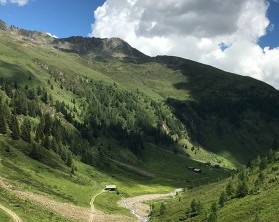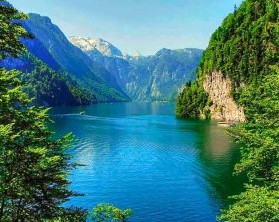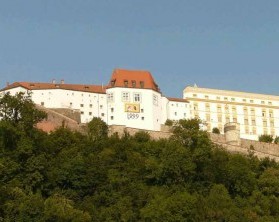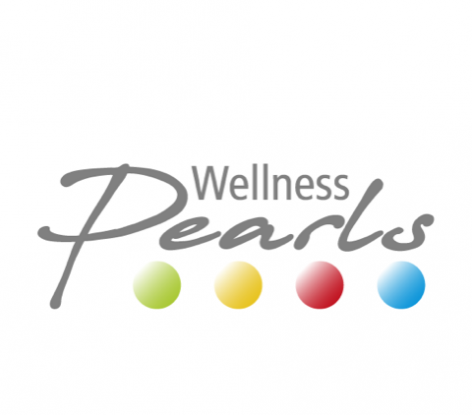Wellnesshotel Marienbad CZ

Marienbad | Mariánské Lázne - city of springs, parks and colonnades
Where is Marienbad actually located?
Mariánské Lázne is a traditional spa town in the west of the Czech Republic. Together with Karlovy Vary and Františkovy Lázne it belongs to the famous West Bohemian spa triangle. Thanks to its location directly on the edge of the Slavkov Forest nature reserve, not only spa guests but also nature lovers will find something for themselves here.
The history of Mariánské Lázne
If you walk through Mariánské Lázne with its well-kept parks and elegant bathhouses today, you can hardly imagine that only 300 years ago Mariánské Lázne was an almost impenetrable jungle. Today Mariánské Lázne is one of the most popular spas in the Czech Republic. Although the healing power of the springs there was known since the Middle Ages, the area was so inaccessible that it could never be settled until the end of the 12th century. It was only at this time that the Czech Gaugraph Hroznata of Ovenec founded the Teplá Monastery.
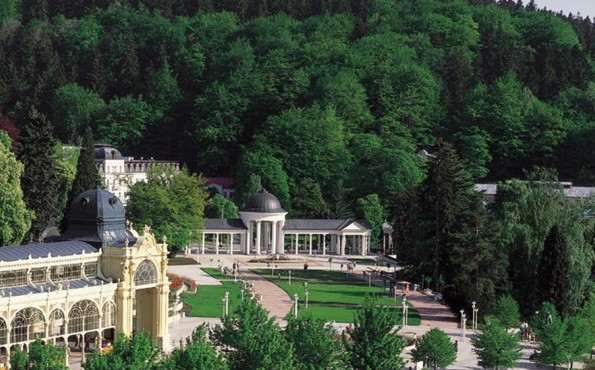
In 1528, Emperor Ferdinand I had the springs in Mariánské Lázne and its surroundings investigated for their salinity. Salt was extracted from the so-called "Ferdinand's Spring", but it could not be used as common salt due to its laxative effect. This was Glauber salt.
At the end of the 18th century, the physician Dr.Josef Jan Nehr researched the properties of the healing springs. At his instigation, the first brick spa house was built in 1808 - "Zur goldenen Kugel".
In 1813 Karl Prokop Reitenberger became the abbot of the Teplá monastery and developed the village further into a bathing resort, which was recognised in 1818 and given the name "Mariánské Lázne" Reitenberger is thus considered the founder of the Mariánské Lázn? spa. Against the will of his monastery brothers, he used funds from the monastery assets to further develop the spa town of Mariánské Lázne Thus he commissioned the garden architect Wenzel Skalnik to drain the marshes and design the parks. Between 1817 and 1823, the architects Georg Fischer and Anton Turner built the spa buildings in the style of Classicism and Empire with altars, pavilions and foyers.
Although famous personalities such as Johann Wolfgang von Goethe and Richard Wagner visited Mariánské Lázne, the actual upswing did not begin until 1872, when the railway was connected to the city, creating a direct link to Vienna and Prague, and later to Karlovy Vary.
Famous personalities such as Gustav Mahler and Johann Strauss, Frederic Chopin and Franz Kafka liked to come to Mariánské Lázne to enjoy the famous spa treatments and to take part in social life. The British King Edward VII also visited Mariánské Lázne nine times and met the Austrian Emperor Franz Josef I or the French Prime Minister Clemenceau. The golden age of Mariánské Lázne lasted until 1914 and is still remembered today by numerous Art Nouveau buildings, spa buildings, foyers and hotels. The parks were also extended and romantic viewpoints were built.

What kind of medicinal springs are there in Mariánské Lázne
There are about 100 medicinal springs in Mariánské Lázne and its surroundings, 40 of them directly in the spa town of Mariánské Lázne All of them are cold and have specific effects.
The most frequently used medicinal springs in Mariánské Lázne are
- the Ferndinad source
- the Karolina spring
- the Cross Spring
- the forest spring and
- the Rudolf Spring.
The Marienquelle is also located here. However, this is not a typical medicinal spring, but a source of natural CO2.
How does the water of the individual healing springs work?
-
Ferdinand Spring:
The Ferdinand Spring is located in the spa gardens in the Ferdinand Colonnade. It is the oldest spring in Mariánské Lázne Actually, this spring consists of 8 individual water outlets called Ferdinand I to VIII. Its chemical composition is similar to the Cross Spring and also tastes very salty. The water from the Ferdinand I spring is used exclusively for drinking cures and aids digestion. The water from the Ferdinand VI spring is used almost exclusively for bottling the mineral water Excelsior and the water from all other Ferdinand springs is used for CO2 baths.
-
Karolina Spring:
This spring was named in 1870 after the wife of the Austrian Emperor Franz Josef I and is located near the spa colonnade. Originally, the water from the spring was used for mineral baths, but today it is mainly used for drinking cures. Urological diseases and kidney stones are treated.
-
Cross spring:
The Cross Spring gushes out in its own pavilion near the spa colonnade. Its water is very rich in minerals and tastes very salty. It was first mentioned in 1749. The water of the Cross Spring is used for drinking cures. The water has a therapeutic effect, for example, in cases of diseases of the digestive tract or metabolic disorders.
-
Forest spring:
The Forest Spring is located in a pavilion in a forest park on the edge of Mariánské Lázne and was first mentioned as early as the 17th century. Its water is used for drinking cures as well as for inhalations and gargling. The water from the Forest Spring is used for diseases of the upper respiratory tract or for urological disorders.
-
Rudolf Spring:
The Rudolf Spring is the most famous spring in Mariánské Lázne Its water has a high calcium content and has an anti-inflammatory effect. The water of the Rudolf Spring is used to treat diseases of the kidney and urinary tract. It is also used as a complementary treatment for osteoporosis.
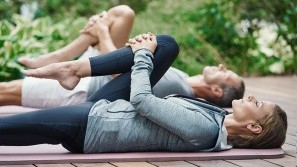
What diseases can I treat during a spa treatment in Mariánské Lázne
A wide range of diseases can be treated during a spa stay in Mariánské Lázne These include:
- Diseases of the locomotor system
- Diseases of the urinary tract and kidneys
- Respiratory diseases
- Metabolic diseases
- Diseases of the digestive organs
- Gynaecological diseases
- Oncological diseases
What other spa treatments are available in Mariánské Lázne
Marian-Gas
In addition to drinking cures and baths, Mariengas also plays an important role in the spa treatments in Mariánské Lázne Marian gas contains 99.7% CO2 and is not found in this form anywhere else in the world. Mariangas is a dry gas which dissolves in the ground water and thus enriches the water with natural CO2. Marian gas is used, for example, in the form of a dry gas bath or as gas sprays.
In a dry gas bath, the guest lies on a lounger, tightly enclosed in a plastic bag filled with Marian gas, which is sealed under the arms. The gas is absorbed by the body through the skin and
- lowers blood pressure
- slows down the heart activity and
- improves kidney activity and blood circulation
During the treatment with gas syringes, the Marian gas is applied with a syringe into the subcutaneous tissue of large joints and the spine. The treated area is better supplied with blood, the pain subsides and the healing process is accelerated. The gas injections also help in cases of circulatory disorders of the limbs or degenerative diseases of the joints.
Peat/Bog (Peloids)
Healing peloids are used in Mariánské Lázn? in the form of envelopes, packs, wraps and baths. They have a healing effect on
- Diseases of the musculoskeletal system
- They improve the blood circulation and
- Alleviate Cellulite
- Loosen tense muscles and
- Have an anti-inflammatory effect.

Sights in Mariánské Lázne
-
The main colonnade
The medicinal springs of Mariánské Lázne also accompany visitors on a walk through the historical spa. Many medicinal springs are surrounded by pavilions, but the most important and popular springs are protected by historical colonnades. However, the most important and most beautiful colonnade is the Main Colonnade. It was built in 1889 on the site of the old spa hall in Baroque style with modern elements. With its length of 119 metres and a width of 12 metres, it invites its visitors to stroll and stroll around. It is definitely worth taking a look at its height, where visitors can admire the ceiling frescos by Josef Vyletal.
-
The singing fountain
After the main colonnade, the Singing Fountain with its fountains is an attraction for visitors to Mariánské Lázne. On the odd hour, many visitors are already waiting for the music to accompany the fountains. Both classical and modern music is played. In the evening the fountains are illuminated. The ceremonial opening of the Singing Fountain takes place every year on 30 April at 21.00, and the season for the Singing Fountain ends on 31 October at 20.00.
-
City Museum
The Town Museum is located in the oldest house in the historical part of Mariánské Lázne The house was originally built in 1818 as a pension for spa guests and was called "Zur goldenen Traube". In 1823 Johann Wolfgang von Goethe lived in this building. An exhibition on the first floor of the house commemorates his visit. Regional collections from Mariánské Lázne and its surroundings also have their place here.
Wellness in Mariánské Lázne
Many guests come to Mariánské Lázne not only for the tried and tested spa treatments - they also visit the spa for the beneficial wellness treatments. Of course, in the wellness hotels, relaxing wellness offers can also be combined with traditional spa treatments. Many wellness hotels in Mariánské Lázn? offer their guests wellness packages for this purpose, which already include a number of wellness treatments.
Numerous 4-star and 5-star wellness hotels are located in lovingly restored Art Nouveau buildings, often directly in the centre of the town at the spa gardens. Here guests find comfortable rooms and modern spa and wellness departments in a traditional ambience.
Some wellness hotels in Mariánské Lázne even have their own mineral springs. The 5-star Hotel Falkensteiner Hotel Grand MedSpa is one of them. The water from the hotel's own Alexandra spring helps both as a spa treatment and as a drinking cure for stomach and skin diseases or gout.
A short break from everyday life can also be enjoyed during a wellness weekend in Marienbad - it doesn't always have to be a spa stay.
